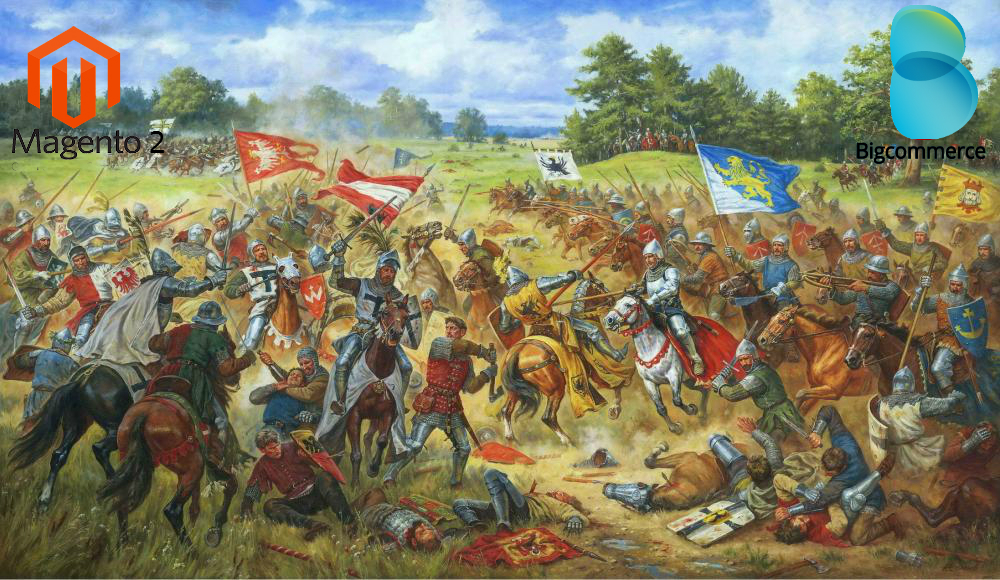Magento 2 vs Bigcommerce

In this Magento 2 vs Bigcommerce review we take a look at both platforms to show which of these ecommerce solutions is best suited for the needs of online retail. Please note that this blog post will be updated when we will get more information about Magento 2.
Being an open source solution, Magento 2 provides a much cheaper starter plan than Bigcommerce, but Enterprise edition, it is much more expensive than its counterpart. As for Bigcommerce, its starter plan offers unlimited products and bandwidth as well as 5GB of file storage; by comparison you can get all these features within various Magento 2 setups.
At the same time, Magento 2 never charges transaction fees, while in case of Bigcommerce they are excluded only in the Golden plan.
The next crucial aspect of every ecommerce platform is payment gateways. Both platforms offers a plethora of services to work with, so Magento 2 and Bigcommerce are nearly equal when it comes to accepting credit cards.
The same is about templates: both platforms offer a decent range of free and paid solutions of similar quality, but there is one problem related to Magento 2 – the new version of the platform is still young, so there are much less available themes and templates, but it is only a matter of time.
As for mobile support, Magento 2 has it out-of-the-box, while with Bigcommerce you will need to choose a responsive theme.
The good news regarding the templates in both Magento 2 and Bigcommerce is a high level of customization via CSS and HTML. Thus, you can easily change every theme according to your business requirements.
One of the most prominent features of Bigcommerce is an abandoned cart saver. With this platform, you get the ability to email people who visited your store, put something into a cart, but didn’t make a purchase. In case of Magento 2 you will need a third party extension. Such solution is often paid, but if you are using Community Edition, getting this feature will be less expensive than purchasing Bigcommerce ecommerce solution.
For those merchants looking for the ability to run several websites in multiple languages or with different conditions for different customers, we recommend to pay attention to Magento 2, since it offers this feature out-of-the-box. With Bigcommerce, you will need a team of developers to create different variants of your online store.
As for the integration with online marketplaces, both platforms offer such opportunity, but the number of appropriate extensions is much higher in the Magento ecosystem.
At the same time, Magento 2 does not provide proper built-in blogging functionality, while Bigcommerce does. But you can easily get the lacking features with the help of third party extensions. Besides, Bigcommerce lets you connect your ecommerce store with your business’ Facebook page really easily; its competitor offers integration via various modules. Additionally, you can connect your Magento 2 store with major social media services in the same way.
As for the ease of use, Bigcommerce is better suited to a user who is not familiar with web design or store building, but there are tons of useful publications about the maintenance of Magento website; therefore, it won’t be difficult to give it a go.
Final words
In case of Bigcommerce you get some outstanding features by default and your interface is more user-friendly compared to Magento’s one. At the same time, you have to pay monthly and are tied to transaction fees.
On the other hand, in the Magento 2 ecosystem, you can easily get all the missing features with the help of third party extensions (note that there are often free alternatives to paid solutions); your platform is free and open source by default, but there are several paid options aimed at different businesses. Moreover, there is a huge community of qualified developers, users and marketers, who are always willing to help you with your ecommerce business.








